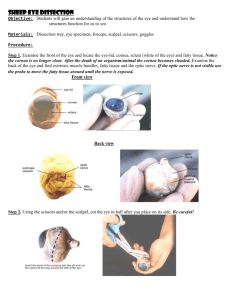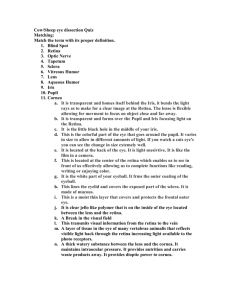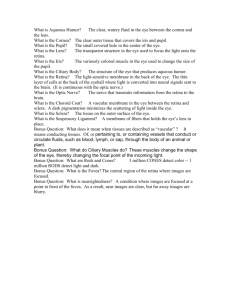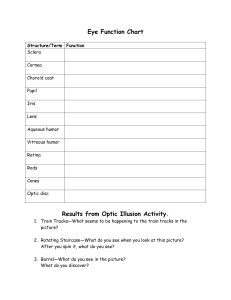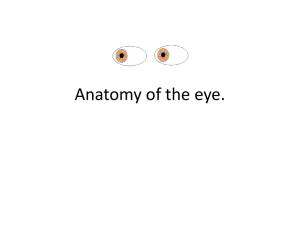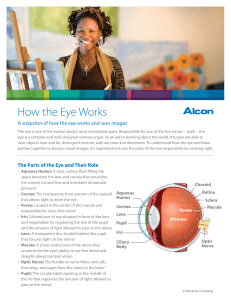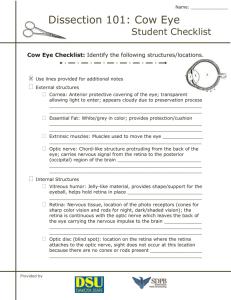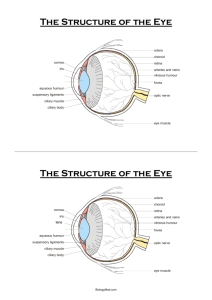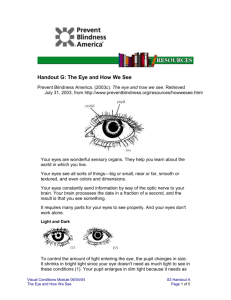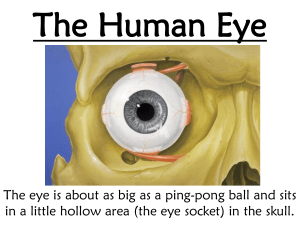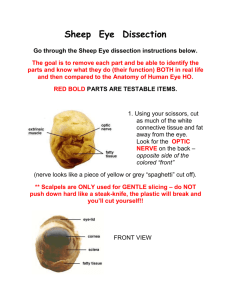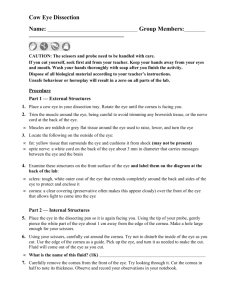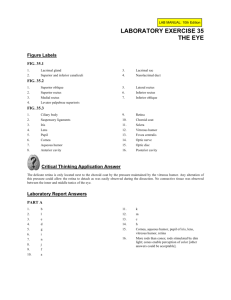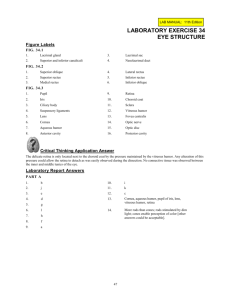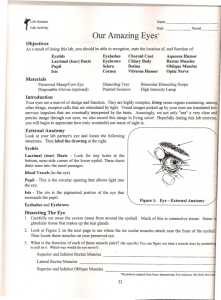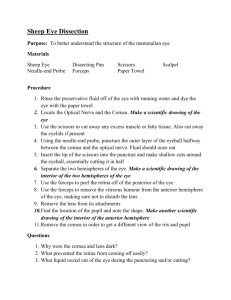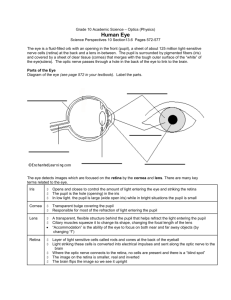light transmission through eye
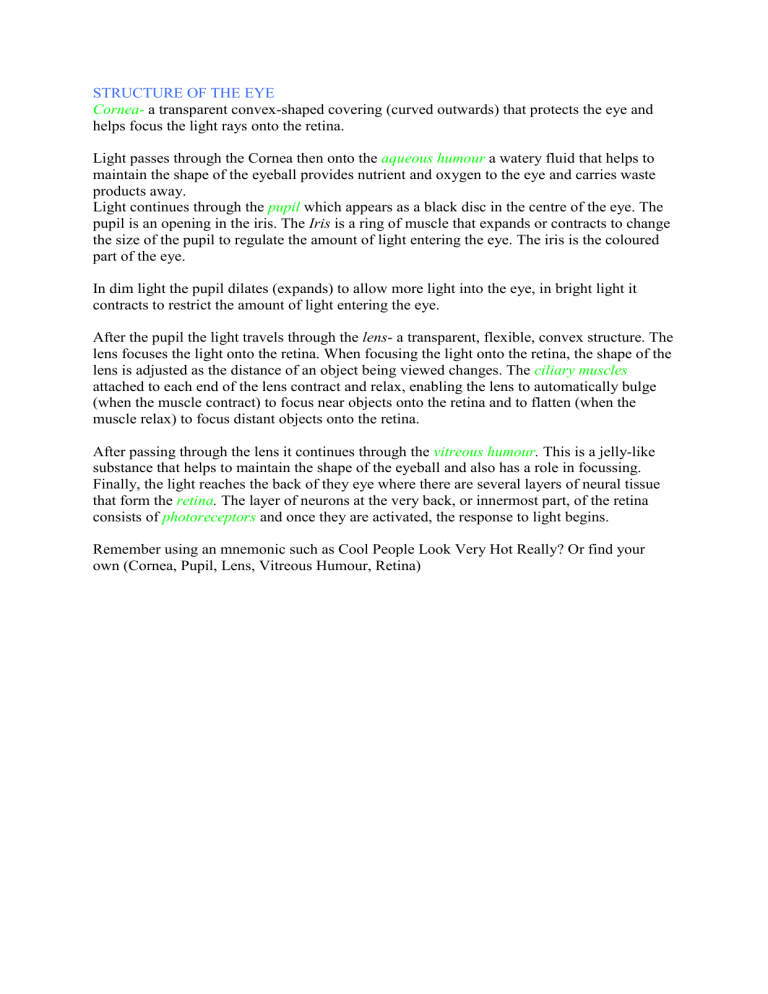
STRUCTURE OF THE EYE
Cornea a transparent convex-shaped covering (curved outwards) that protects the eye and helps focus the light rays onto the retina.
Light passes through the Cornea then onto the aqueous humour a watery fluid that helps to maintain the shape of the eyeball provides nutrient and oxygen to the eye and carries waste products away.
Light continues through the pupil which appears as a black disc in the centre of the eye. The pupil is an opening in the iris. The Iris is a ring of muscle that expands or contracts to change the size of the pupil to regulate the amount of light entering the eye. The iris is the coloured part of the eye.
In dim light the pupil dilates (expands) to allow more light into the eye, in bright light it contracts to restrict the amount of light entering the eye.
After the pupil the light travels through the lens - a transparent, flexible, convex structure. The lens focuses the light onto the retina. When focusing the light onto the retina, the shape of the lens is adjusted as the distance of an object being viewed changes. The ciliary muscles attached to each end of the lens contract and relax, enabling the lens to automatically bulge
(when the muscle contract) to focus near objects onto the retina and to flatten (when the muscle relax) to focus distant objects onto the retina.
After passing through the lens it continues through the vitreous humour . This is a jelly-like substance that helps to maintain the shape of the eyeball and also has a role in focussing.
Finally, the light reaches the back of they eye where there are several layers of neural tissue that form the retina . The layer of neurons at the very back, or innermost part, of the retina consists of photoreceptors and once they are activated, the response to light begins.
Remember using an mnemonic such as Cool People Look Very Hot Really? Or find your own (Cornea, Pupil, Lens, Vitreous Humour, Retina)

